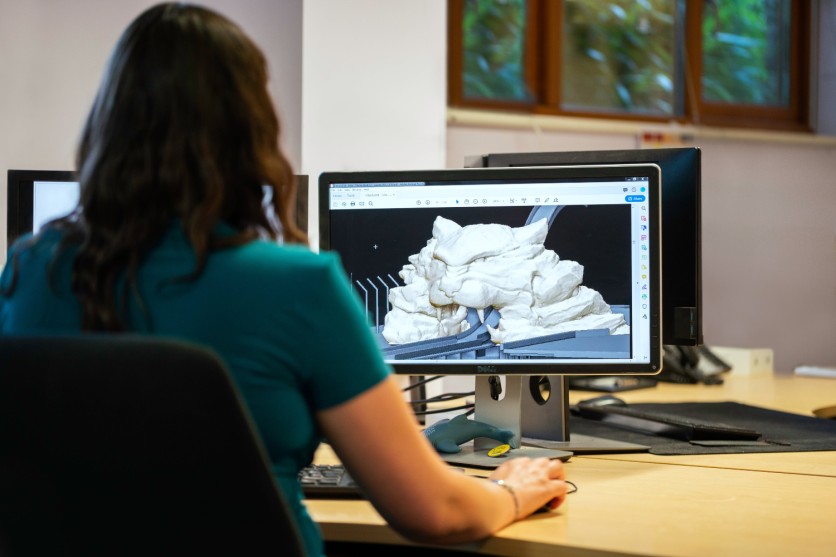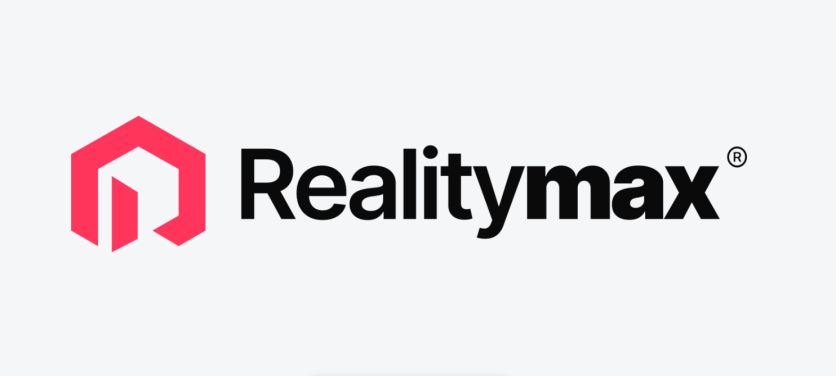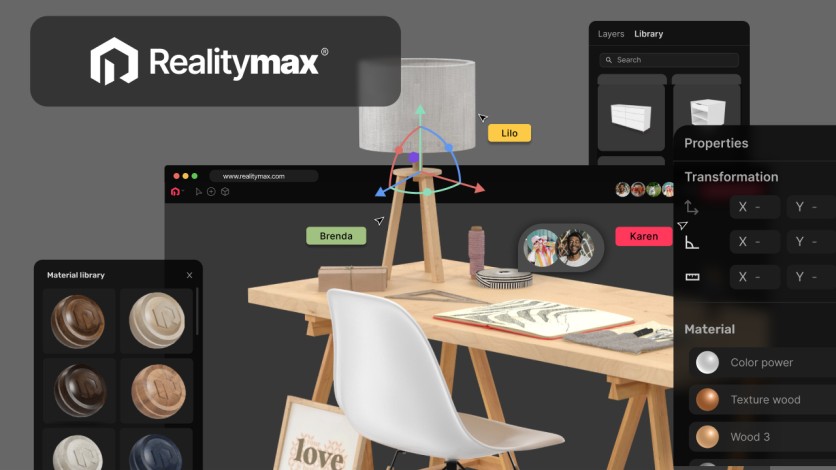
Crafting 3D models presents various hurdles, including resource constraints, tight timelines, and collaboration gaps within teams. The intricacies of texturing and animating further extend the time investment in this process.
While architects, engineers, and product designers commonly use 3D design tools, many lack real-time collaboration features. These tools focus on creation but fall short in fostering collaborative efforts.
What advantages does design collaboration software offer?
The key lies in collaboration for effective 3D model creation, driving productivity, and enhancing communication among diverse team members. Through a centralized platform, teams can seamlessly collaborate in real-time, utilizing tools that empower them to define, refine, and actualize concepts collectively. This approach significantly reduces the time and effort required to complete intricate design projects.
This article outlines the top 5 best 3D design collaboration platforms in 2024 to speed up the development process, stimulate creative problem-solving, and improve communication across the organization vertical.
1 RealityMAX

Overview
RealityMAX is transforming the world of 3D design collaboration with its easy-to-use, web-based platform, widely embraced by a global audience. Renowned organizations, including Nissan, AB InBev, Tate, and universities like NYU and Stanford, are leveraging its capabilities for a range of impactful projects.
Combining real-time collaboration, versatile sharing options, and in-browser functionality, RealityMAX democratizes the 3D design process. Whether detailing architectural models, crafting immersive AR marketing experiences, or revolutionizing educational methods, the platform transforms complex visions into tangible realities.
RealityMAX is not just a tool for 3D design but a portal to endless possibilities across various industries. RealityMAX's versatility in interior design enables designers and clients to collaboratively visualize and place objects in real spaces, enhancing decision-making.It's equally transformative in furniture design, from easily choosing the perfect material for a bedroom to showcasing the 3D models in an embedded solution for e-commerce and websites. Also, the platform allows educators to enrich the learning experience and manage teamwork and assignments more efficiently.
Whether users are seasoned professionals or beginners, RealityMAX facilitates the effortless creation of stunning scenes with its extensive array of 3D models. Achieving the perfect visual composition becomes intuitive, thanks to the platform's rich library and tools for combining, arranging, and transforming elements.
Beyond its creative capabilities, RealityMAX significantly optimizes time and resources. Real-time collaboration streamlines workflows, expediting the review process for immediate feedback and on-time project completion. The platform offers up to 2 GB of free storage space, making it an ideal starting point for creators, students, and beginners, with no limits on team members, shares, or uploads for the free plan.
RealityMAX provides a Pro plan for those seeking enhanced features, offering up to 500 GB of storage space, custom branding, priority support, and additional tools and capabilities tailored for team projects. The Pro plan takes collaboration to the next level, ideal for established professionals and small-to-medium-sized businesses, ensuring a seamless and powerful 3D design experience.

Key Features
Real-time Collaboration
RealityMAX offers an advanced collaborative environment where team members can interact seamlessly across devices. Changes made are visible instantly, fostering a dynamic and cohesive workspace that connects teams globally through a single, accessible link.
Versatile Sharing Options
Users can share their projects as interactive Web 3Ds or augmented reality experiences, embedding them directly into websites for a broader audience reach. These embeds are SEO-friendly. Thus, they can help boost traffic to the site to increase its ranking.
Smart Materials
The platform offers dynamic textures that adapt to 3D model dimensions, enhancing the design process. Teams can simulate real-world scenarios to make their models look more realistic, whether for architectural structures, consumer products, or industrial machinery.
In-browser Functionality
With no downloads required, RealityMAX provides flexibility and accessibility to teams of all sizes across any industry. Users can access the platform from any internet-enabled device, make real-time changes, and receive instant feedback. It fast-tracks the approval process by eliminating the back-and-forth workflows and exchanges of design files and documents, delaying the project's progress.
Embrace the Future with RealityMAX
RealityMAX is revolutionizing the 3D design landscape, offering a suite of advanced features that cater to various industries. Its advanced collaboration tools, versatile sharing options, and innovative smart materials are redefining industry standards.
Packed with features that streamline workflows and the design process, it supports all major 3D file formats and ensures everyone is on the same page for successful project completion. It has state-of-the-art secure systems for protecting sensitive design data, providing intellectual property, and keeping other confidential business information safe and only accessible to authorized members.
Whether you're a student, designer, or industry professional, RealityMAX is ready to transform your creative process. Dive into the world of endless possibilities with this easy-to-use platform. Sign up for the free plan or explore premium offerings for enhanced features and storage.
2 Vectary

Overview
Vectary is an online collaboration platform for creating and managing interactive 3D design, aiming to inspire, educate, and solve problems. It requires no download or code, making 3D design collaboration accessible via a web browser.
Many professionals, including product managers and marketers, use Vectary to visualize concepts and ideas. By designing realistic products, they can leverage the 3D design collaboration platform to create higher engagement and conversations.
It can also improve the feedback loop among business teams, accelerating the cycle from concept development to market launch. It offers high-quality rendering, interactions, and other features made for bringing creative ideas to life.
It is designed with the highest security standards, complying with ISO 27001, GRDPR, and CCPA regulations. It is subject to regular security audits, ensuring data remains protected, and security measures are up-to-date.
It is also an augmented reality platform. Teams can gain a better perspective when they can visualize and examine the details of their designs from all angles. Anyone with viewer rights can leave feedback directly by accessing one shared link, freeing teams from large file transfers and delays.
Key Features
Studio
Vectary reinvents the way 3D content is created and distributed through its studio. It is a powerful tool for creating and importing 3D assets. Teams can get instant visual feedback while editing the project.
It contains preset environments for users in need of a real-life setting, advanced effects for post-processing, and other materials to create a professional finish to the design. Designers can also add 2D graphics to the 3D objects, which they can use for branding or mockups to enhance the realism.
Animations
Vectary features an animation mode designers can leverage to achieve professional-level motion in the scene. They add multiple animations to showcase the different elements of a product's design.
Interactions
Interactions can control various behaviors in the scene. Each interaction added consists of a trigger, conditions, and actions. Designers can use them to determine how the audience can interact with the design to establish user behavior.
3D Configurators
Vectary also features 3D configurators, which can reveal layers of information about the 3D design. Designers can add cameras so prospects can switch angles to see predefined details or sounds to make the experience more immersive. These elements can impress audiences and boost engagement for higher conversion, leading to better product sales.
They can help marketers create a more engaging and interactive brand experience while building awareness among different prospects. By incorporating different elements, brands are more likely to be recommended by customers to other consumers.
Collaboration is fast and easy with Vectary, reducing the likelihood of errors or delays, especially with access management features to control who gets to view or edit designs. It is a secure, scalable, and flexible 3D design collaboration platform for all industries.
3 Onshape

Overview
Onshape is a cloud-native product development platform, deployable on any computer or mobile device, where teams can experiment with design alternatives together or independently without affecting each other's work. It uses the full power of cloud architecture so users can access, manage, and share design data securely from anywhere in the world, eliminating the problems of lost data and siloed desktops.
It is a multi-user environment with built-in collaboration tools, which allow teams to streamline communication for fast approval or feedback. It offers flexible pricing plans with out-of-the-box solutions for design collaboration. Teams can edit the same projects concurrently with real-time updates, removing bottlenecks of using traditional computer-aided design and product data management systems. This results in faster iterations, enabling agile development to reduce time to market and prioritize product quality.
Key Features
Onshape ensures teamwork and collaboration across all teams, including stakeholders and external partners. They can leave live comments directly in a design document so other users can immediately identify the issue for quicker resolution.
It features branching and merging, which allow teams to explore alternative designs. They incorporate the best elements from different designs into the latest version of the project, making it easier to build variations or experiment with changes.
The edit history of Onshape captures all changes and makes them accessible to users so they can review, change, or undo edits if needed. The audit trail is never erased. Teams can try new ideas without affecting the latest version of the design.
Its database-driven architecture eliminates the risks of unauthorized duplication, data breaches, or accidental sharing. All designs get stored and tracked with complete version history. Admins can audit or roll back changes when needed. They can also assign specific permissions and rights to every designer, engineer, etc., to control access, reducing the likelihood of insider threats.
Onshape is packed with rich features for 3D design collaboration, with support available via its learning center, community, and staff. Teams can leverage the platform to develop quality products quickly and securely in real-time.
4 Unity Reflect Review

Overview
Unity Reflect Review is a cloud-based platform made for architects and designers, facilitating collaborative design reviews in a single, shared environment. It can connect teams wherever they are, driving alignment faster to fast-track the approval of designs. It can seamlessly integrate with popular tools like Revit, BIM 360, and Rhino, enabling multi-user collaboration and annotations on any device.
Key Features
Teams can identify mistakes earlier and avoid costly rework as Unity Reflect Review can house multiple models and their metadata together for efficient collaboration. They can make changes to any project on-premise or in the cloud and even view large models on any device or platform, including VR and AR. Only derived data is sent to the cloud, never the files that contain exclusive company information.
Since the platform is linked to original design models, teams can generate interactive and immersive experiences for faster decision-making. They can easily share a project link with executive stakeholders and walk through the model together by using the Follow mode. They can see what designers see in real-time, putting everyone on the same page to avoid misunderstandings and errors.
Unity Reflect Review lets teams overlay models in 1:1 AR at scale, conduct sun studies, and filter BIM data, making it easier to communicate design intent to fast-track the approval process. Teams can share models through link sharing, where the platform automatically assigns users seats. Account owners can manage seat assignments to control the model's accessibility fully.
With integration and VR/AR visualizations, Unity Reflect Review can foster better design alignment among teams in architecture and design firms. They can interact with the 3D models, explore design alternatives, and make informed decisions in real-time.
5 SketchUp

Overview
SketchUp is a 3D modeling software with interconnected tools to help teams define, refine, and actualize concepts. It supports a range of professional file formats and facilitates cross-functional efficiency with features made for design collaboration, like 3D markup, task assignment, and clash checking.
Key Features
Teams can increase workflow efficiency by importing, viewing, and modeling directly on-point cloud data from scans or captures. They can scan essentials to ensure model accuracy, regardless of the file size. They can also add realism to the projects by using C-Ray to generate high-quality visuals with atmospheric effects, real-life textures, etc.
SketchUp can shorten project timelines with real-time rendering. Teams can make edits on the fly and quickly present revisions. They can also tour project models in the office or on-site through mobile and AR/VR apps. Clients and stakeholders can better visualize and give feedback accordingly.
SketchUp can also provide design recommendations based on weather and building type so teams can get quick insights before creating any design. It also contains hundreds of manufacturer-approved models, which designers can use to speed up the workflows exclusive to the Pro users.
More than 41 million professionals and hobbyists use the 3D modeling tool, with award-winning credibility to prove its utility. Teams can use the platform to collaborate efficiently, as it provides a shared space to access, review, and annotate models and drawings in real-time.
Conclusion
There are many steps involved in creating visually appealing 3D assets that can impress audiences, especially stakeholders and high-profile clients. Choose from the top 5 best 3D design collaboration platforms in 2024 and accelerate the time-consuming stages of building 3D models. They all promise access across multiple devices, enabling real-time cooperation and effective communication, driving efficiency and productivity for the successful completion of design projects.
ⓒ 2025 TECHTIMES.com All rights reserved. Do not reproduce without permission.




